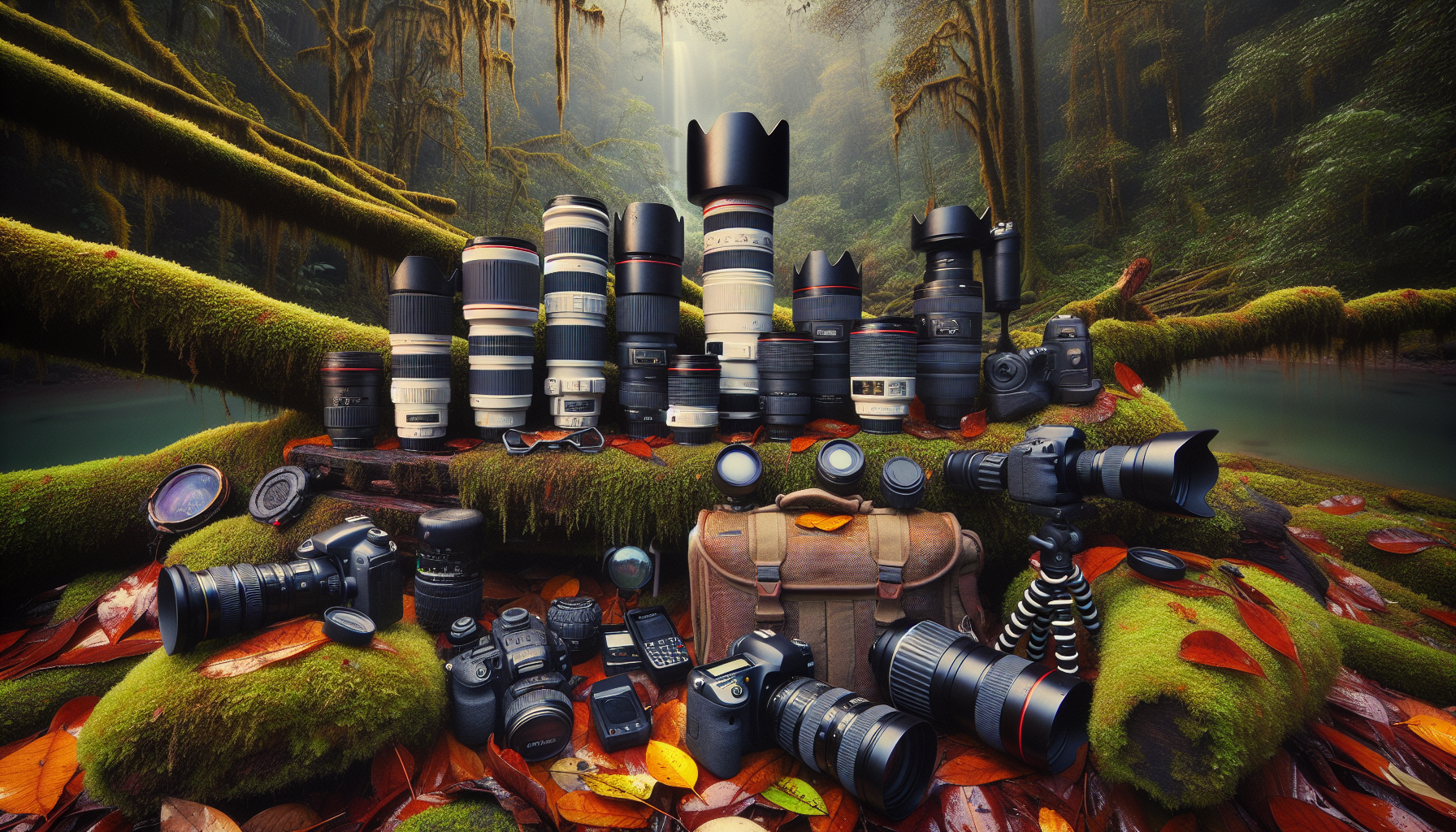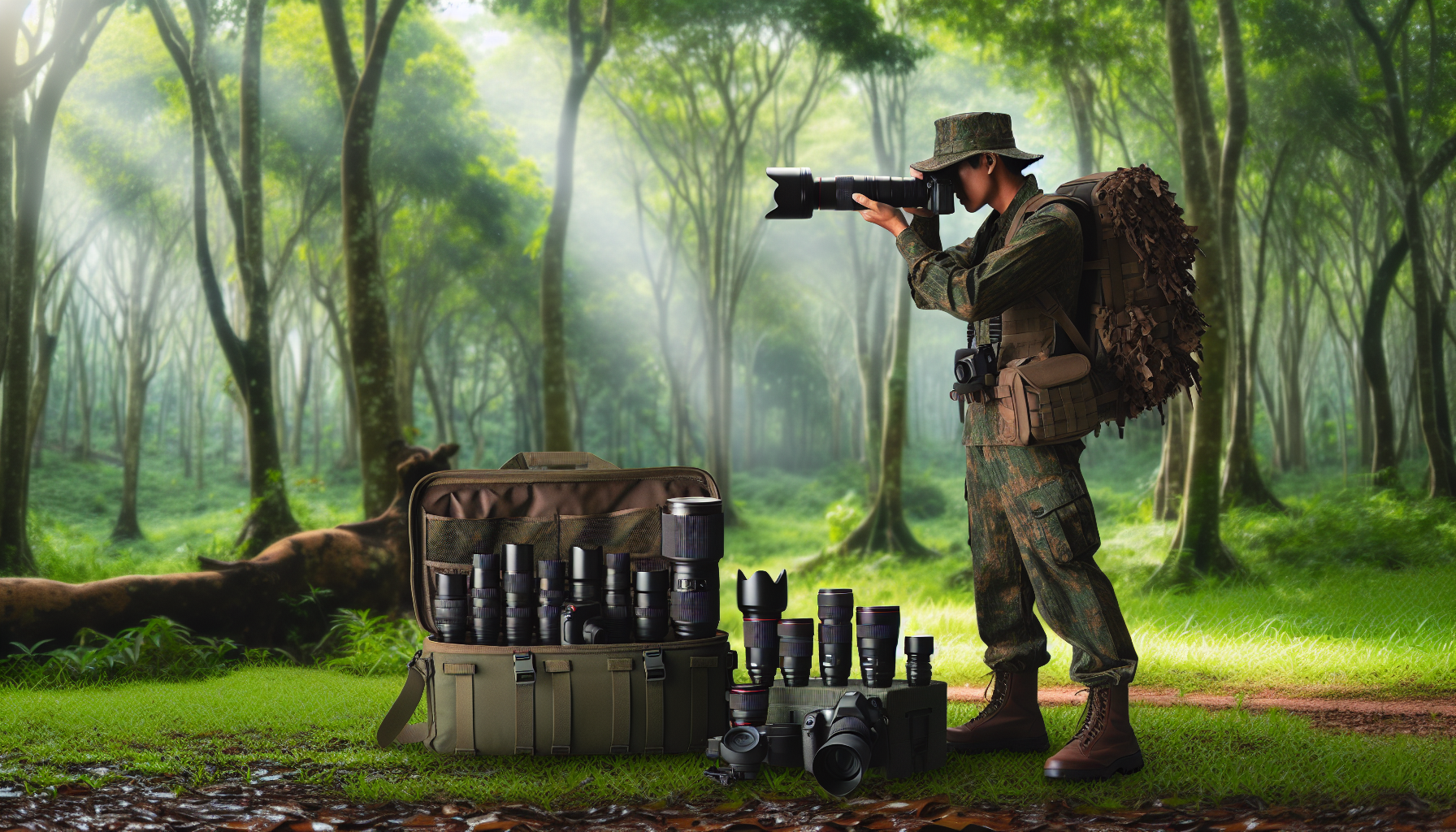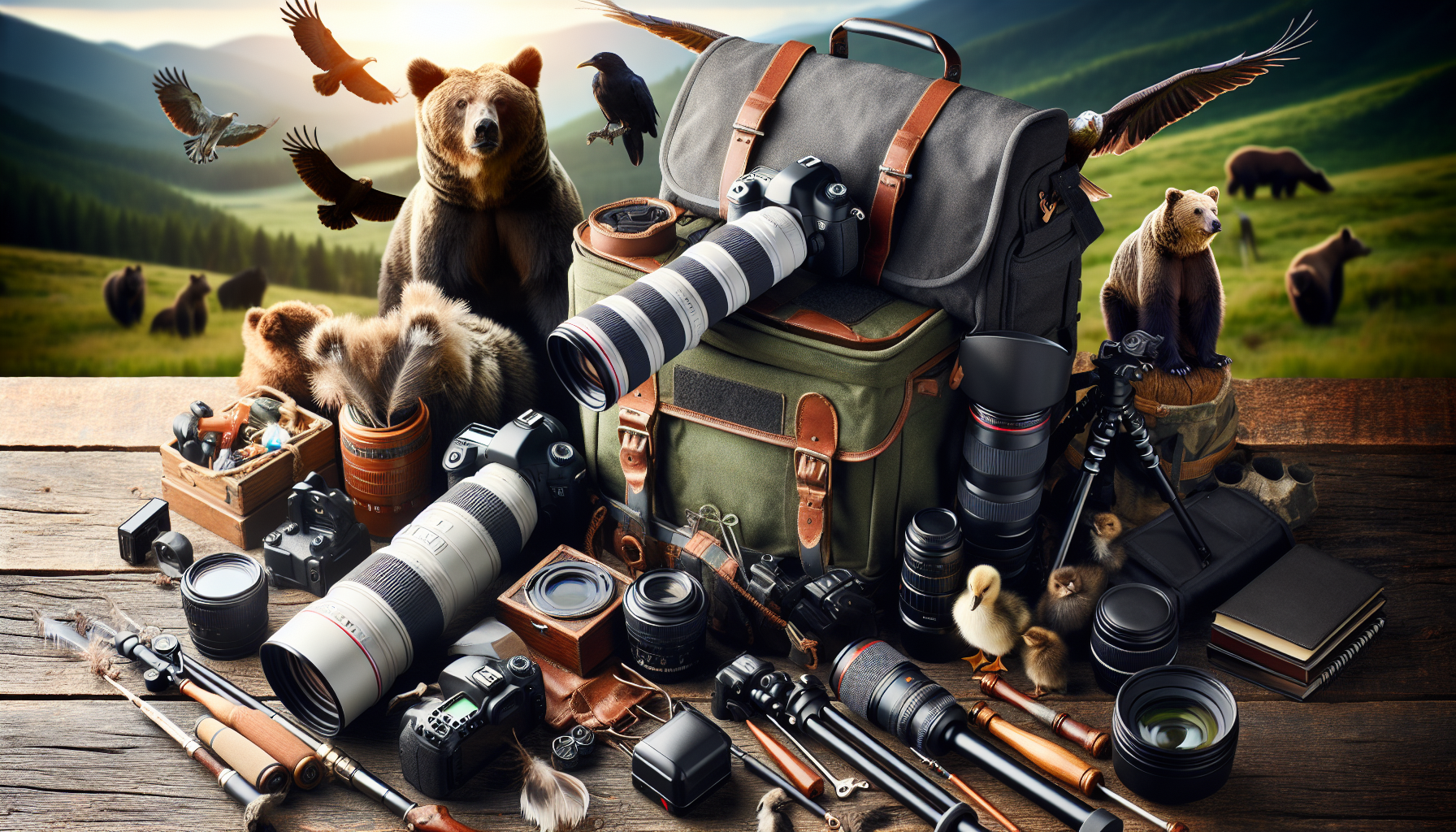Embarking on the journey of wildlife photography requires knowing the essential wildlife photography gear: best cameras & lenses. When I first started photographing the majestic snow leopards in the mountains of Pakistan, I quickly realized how vital it was to have the right gear. A robust camera body that can withstand harsh conditions is crucial. Pair it with a versatile lens like a 70-200mm for capturing close-ups from a distance. These tools empowered me to capture breathtaking shots that I never thought possible. To understand more about camera specifications, check out resources like CameraSpecs. Quality gear can truly transform your photographic experience. Whether you’re capturing the vibrant plumage of a Himalayan monal or the stealthy movements of a leopard, having the right equipment is key.
Related: The Ultimate Guide to Wildlife Photography in Pakistan: Master Nature's Beauty
Best Cameras for Wildlife Photography in Pakistan
When venturing into the diverse landscapes of Pakistan, capturing its wildlife requires the right equipment. I’ve spent countless hours in the serene valleys of Swat and the rugged terrains of Balochistan. Here’s my take on the best cameras for wildlife photography in our beautiful country.
Top Camera Choices for Capturing Pakistan’s Wildlife
The Canon EOS R5 is a personal favorite. Its 45-megapixel sensor ensures stunning detail, even when shooting at a distance. I remember capturing a snow leopard in Skardu with this beauty, and the image was breathtaking. The camera’s fast autofocus is perfect for fleeting wildlife moments.
If you prefer Nikon, the Nikon D850 is another excellent choice. Its speed and reliability are unmatched, especially useful for fast-moving subjects like the chukar partridge you might spot in the Margalla Hills. The D850’s battery life is another bonus; it keeps up with long, adventurous days.
Why Mirrorless Might Be Your Best Bet
Mirrorless cameras are gaining popularity among wildlife photographers. The Sony A7R IV is a lightweight option with excellent image quality. It’s perfect for long hikes in the Karakoram range, where every ounce counts. The silent shooting mode is a feature that wildlife photographers will love. It allows you to capture images without disrupting the natural environment.
Choosing the right camera is just part of the equation. Combine it with quality lenses and you’ll be well on your way to creating stunning wildlife imagery. For those new to wildlife photography, checking out a detailed photography guide on National Geographic can be quite beneficial.
Top Lenses for Capturing Stunning Wildlife Shots

Choosing the right lens for wildlife photography can be a game changer. The right lens helps you capture the raw beauty of animals in their natural habitat. Living in Pakistan, I often find myself exploring the diverse landscapes from the northern mountains to the southern deserts. This diversity calls for a versatile set of lenses that can adapt to various environments and lighting conditions.
Prime vs. Zoom Lenses: What’s Best for Wildlife?
When I started my wildlife photography journey, I quickly learned that both prime and zoom lenses have their place. Prime lenses, like the 300mm f/2.8, offer unparalleled sharpness and are fantastic for capturing the fine details of a bird’s feathers. However, they can be limiting if you can’t physically move closer to your subject. On the other hand, zoom lenses like the 100-400mm are incredibly versatile, allowing you to adjust your focal length without changing your position.
For those just starting out, I recommend a versatile zoom lens. It offers flexibility and a good range for various subjects, from the elegant Markhor of the Himalayas to the playful Indus dolphins. According to a report by National Geographic, many wildlife photographers prefer zoom lenses for their adaptability in the field.
My Top Lens Picks for the Pakistani Wilderness
- Canon EF 100-400mm f/4.5-5.6L IS II USM: Ideal for capturing fast-moving subjects.
- Nikon AF-S NIKKOR 200-500mm f/5.6E ED VR: Offers incredible reach for distant wildlife.
- Sony FE 200-600mm f/5.6-6.3 G OSS: Perfect for full-frame Sony users who want range and clarity.
These lenses have served me well on countless trips across Pakistan. Each offers unique advantages, whether you’re photographing shy snow leopards or vibrant peacocks. The key is to choose a lens that aligns with your style and the specific wildlife you wish to capture.
Essential Wildlife Photography Gear: Best Cameras & Lenses for Beginners
When I first ventured into the enchanting world of wildlife photography, I felt overwhelmed by the multitude of gear options available. As a beginner, I quickly learned that you don’t need the most expensive equipment to capture breathtaking images. Let me share some tips and recommendations that I wish I had known at the start.
Top Camera Picks for Novice Wildlife Photographers
Choosing the right camera is crucial. For beginners, I recommend starting with a DSLR or mirrorless camera that offers versatility and ease of use. Canon’s EOS Rebel series and Nikon’s D3500 are both excellent choices. They provide great image quality and are user-friendly, making them perfect for capturing the stunning wildlife of Pakistan.
Mirrorless cameras, like the Sony Alpha A6000, have gained popularity due to their compact size and advanced features. They are lightweight, which is a bonus when trekking through the varied landscapes of Pakistan, from the lush forests of the north to the arid deserts in the south.
Choosing the Right Lenses for Wildlife Photography
The lens you choose can significantly impact your wildlife photography. A telephoto lens is essential for capturing distant subjects. The Tamron 70-300mm is an affordable option that delivers impressive results. It’s a great companion when you’re trying to capture elusive wildlife species in their natural habitats.
If you’re interested in learning more about capturing rare species and scenic landscapes in Pakistan, check out our detailed guide here: The Ultimate Guide to Wildlife Photography in Pakistan. This guide offers valuable insights and tips tailored specifically for the diverse ecosystems found in the region.
Before you embark on your wildlife photography journey, remember that the most crucial element is patience. Spend time observing your subjects and understanding their behavior. This approach not only improves your photography skills but also deepens your connection with nature.
How to Choose the Right Wildlife Photography Gear in PK
When stepping into the realm of wildlife photography in Pakistan, selecting the right equipment can make all the difference. Our landscapes, from the Himalayan foothills to the Thar Desert, offer a unique backdrop for capturing stunning wildlife images. Let me share some insights from my adventures across the country.
Choosing the Ideal Camera for Wildlife Photography
In my experience, a camera with a fast shutter speed and good low-light performance is essential. The Nikon D500 or Canon EOS 90D are excellent choices. They handle the unpredictable behavior of wildlife beautifully. A few months back, while photographing snow leopards in the Karakoram, the fast shutter speed of my Nikon helped freeze the action perfectly. Consider cameras with good autofocus systems and high frames per second. The wildlife here can be both swift and elusive!
Picking the Right Lenses
For lenses, a telephoto lens is a must-have. The 70-200mm or 100-400mm lenses work wonders. I remember capturing the vibrant plumage of birds in Sindh’s wetlands with my 100-400mm lens. The clarity and detail were breathtaking. A wide aperture is also beneficial, especially in low-light conditions. It can make your subject stand out against the background. You might want to check out some leading lens brands for quality options Camera Lens Guide.
Another tip: invest in a sturdy tripod and a good quality camera bag. These accessories save your gear from the elements and ensure stability for crisp images. Adventure awaits in every corner of Pakistan. With the right gear, you’ll be ready to capture its wild beauty.
Essential Wildlife Photography Gear: Best Cameras & Lenses for Professionals

As a wildlife photographer based in Pakistan, I’ve learned that having the right gear can make or break your shot. Whether you’re capturing the majestic snow leopards of the Himalayas or the vibrant birdlife in the lush forests of Punjab, having the best cameras and lenses is crucial.
Top Cameras for Capturing Wildlife
For professional wildlife photography, I recommend the Canon EOS-1D X Mark III. Its fast autofocus and excellent low-light performance are ideal for early morning or late evening shoots. Another top choice is the Nikon D6, known for its robust build and incredible burst rate, perfect for capturing fast-moving subjects like birds in flight.
Mirrorless cameras have also become popular among professionals. The Sony A9 II is a favorite, offering silent shooting and impressive speed, which is crucial when photographing elusive animals in Pakistan’s diverse landscapes.
Choosing the Right Lenses
Lenses are equally important in wildlife photography. A versatile choice is the Canon EF 100-400mm f/4.5-5.6L IS II USM lens. It provides a great balance between reach and portability. For Nikon users, the AF-S NIKKOR 200-500mm f/5.6E ED VR is a budget-friendly option that doesn’t compromise on quality.
For those using Sony’s mirrorless systems, the Sony FE 200-600mm f/5.6-6.3 G OSS lens is a stellar choice. Its extended focal range is perfect for photographing wildlife from a distance, ensuring you don’t disturb your subjects.
Investing in these essential tools can significantly enhance your photography. Whether you’re a seasoned pro or an aspiring wildlife photographer in Pakistan, these cameras and lenses will help you capture the beauty of nature effortlessly. For tips on using this gear effectively, check out Photography Tips Resource.
Conclusion
Embracing the wild beauty of Pakistan through your lens is an exhilarating journey. With the right gear, you can capture moments that resonate with the raw beauty of our landscapes. As we conclude our exploration of essential wildlife photography gear, let’s reflect on how the right cameras and lenses can elevate your wildlife photography in Pakistan’s diverse habitats.
Choosing the Right Tools for the Wilderness
In my experience, starting with a robust camera body is vital. Whether you’re exploring the majestic peaks of the Karakoram or the lush greenery of the Margalla Hills, a camera with excellent low-light performance and fast autofocus can make all the difference. Brands like Canon and Nikon offer models that thrive in the challenging conditions often found in our local terrains.
Investing in high-quality lenses is equally important. A telephoto lens is a wildlife photographer’s best friend, allowing you to capture elusive animals without disturbing their natural habitat. During my trip to the Deosai National Park, using a 70-200mm lens allowed me to photograph the magnificent Himalayan brown bears from a safe distance. Consider prime lenses for sharper images and zoom lenses for versatility.
Practical Tips for Successful Wildlife Photography
Beyond the equipment, knowing how to use it in the field is crucial. Here are a few tips to enhance your photography:
- Patience is key. Wildlife photography often involves waiting for the perfect moment.
- Understand animal behavior to anticipate movement and capture more dynamic shots.
- Practice ethical photography. Respect wildlife and maintain a safe distance.
For further reading on ethical wildlife photography practices, I recommend checking out resources from the World Wildlife Fund and National Geographic.
Ultimately, your passion and curiosity will drive your journey through the wilderness. By choosing the right gear and honing your skills, you can create stunning images that tell the story of Pakistan’s incredible biodiversity.
Frequently Asked Questions
What are the best camera settings for wildlife photography to capture sharp images?
For wildlife photography, using a fast shutter speed is crucial to capture sharp images of moving animals. A shutter speed of at least 1/1000th of a second is recommended. Pair this with a wider aperture like f/4 or f/5.6 to allow more light to hit the sensor, and adjust your ISO accordingly to ensure proper exposure without introducing too much noise. Additionally, using continuous autofocus (AI Servo for Canon, AF-C for Nikon) will help keep moving subjects in focus.
Which lenses are best for wildlife photography to capture distant subjects?
For capturing distant wildlife subjects, telephoto lenses are essential. Lenses with focal lengths of 300mm and above are ideal. Popular choices include the Canon EF 100-400mm f/4.5-5.6L IS II USM, Nikon AF-S NIKKOR 200-500mm f/5.6E ED VR, and Sony FE 200-600mm f/5.6-6.3 G OSS. These lenses offer the necessary reach and image stabilization to help produce sharp images even at long distances.
How can I improve my wildlife photography skills as a beginner using basic equipment?
Improving wildlife photography skills starts with understanding your equipment and practicing regularly. Begin by mastering the basics of composition and lighting. Experiment with different perspectives and make use of natural light during golden hours for better image quality. Learn to anticipate animal behavior, which helps in capturing decisive moments. Additionally, join photography workshops or online communities to gain insights and feedback from experienced photographers.


Leave a Reply